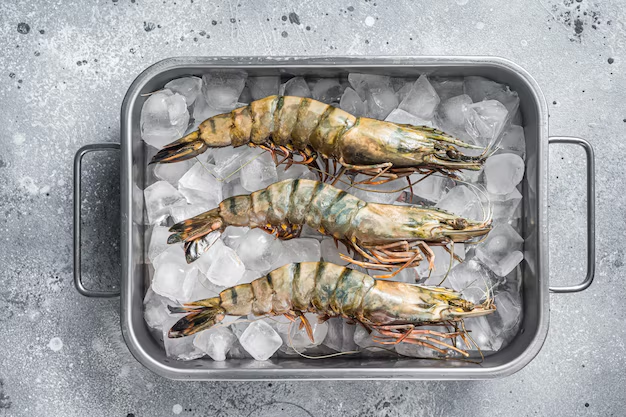Discovering the Shelf Life of Thawed Shrimp: How Long Is It Good in the Refrigerator?
When it comes to enjoying seafood, shrimp is a versatile favorite in many cuisines around the world. Whether you’re planning a sumptuous dinner or a light seafood salad, shrimp can be a satisfying and nutritious choice. But once shrimp is thawed, an important question arises: how long is it good in the refrigerator? Understanding the answer is essential to maintain both safety and flavor in your cooking adventures. Let's dive into best practices for storing thawed shrimp and explore a few additional insights into seafood storage.
Ensuring Freshness: The Refrigerator Rule
Once you’ve thawed shrimp, whether for a planned dish or because you bought it pre-thawed, managing its storage is critical to keeping it fresh and safe for consumption. It’s generally held that thawed shrimp can be safely kept in the refrigerator for up to 1-2 days. Beyond this, its quality might deteriorate, and the risks of spoilage increase.
Factors Influencing Shrimp's Freshness
- Temperature Management: Keeping the refrigerator temperature at or below 40°F (4°C) ensures that shrimp and other perishables remain fresh.
- Packaging: Store thawed shrimp in airtight containers or wrap it well to inhibit bacterial growth and minimize odors.
- Moisture Control: Ensure minimal exposure to moisture by blotting shrimp dry before storing, which helps in maintaining texture and flavor.
Transitioning from Freezer to Fridge: Best Practices
Thawing shrimp safely is just as important as storing it. Here’s how to do it right:
Thawing Methods: Best Options
- Refrigerator Thawing: Move shrimp from the freezer to the fridge a day in advance. This method keeps shrimp at a safe temperature throughout the thawing process.
- Cold Water Thawing: Submerge shrimp in a sealed bag in cold water, changing the water every 30 minutes. This technique thaws shrimp more quickly while keeping safety in focus.
Keeping the Clock in Check
Regardless of the method, once thawed, use shrimp within 1-2 days. If your plans change, consider cooking the shrimp and then storing cooked leftovers, which can last a few more days in the refrigerator.
Cooking with Confidence: Recognizing Spoiled Shrimp
Even with careful storage, knowing the signs of spoilage ensures you’re serving fresh and safe food. Look out for these indicators:
- Unpleasant Odor: Fresh shrimp should have a distinct, ocean-like smell; anything sour or ammonia-like indicates spoilage.
- Color Changes: While shrimp naturally change color when cooked, any off-color or dullness in raw shrimp could be a red flag.
- Texture Variations: Fresh shrimp should feel firm. A slimy texture is a warning sign it’s time to discard.
Extending Shelf Life: Option for Refreezing
In certain circumstances, you might consider refreezing shrimp. Here’s what you need to understand:
- Refreezing Criteria: Refreeze shrimp only if it was thawed in the refrigerator and hasn’t been outside for more than 1-2 days. This helps maintain food safety and quality.
- Impact on Quality: Repeated freezing and thawing can affect shrimp’s texture, making them less appealing, but generally safe to eat once cooked properly.
Eating Smart: Nutritional Benefits of Shrimp
Beyond storage techniques, it’s worthwhile understanding the nutritional advantages of including shrimp in your diet. Shrimp are a rich source of protein, low in calories, and contain essential nutrients like omega-3 fatty acids, vitamin B12, and iodine.
📝 Quick Storage Summary:
- Thawing Methods: Refrigerator or cold water thawing are preferable.
- Post-Thaw Storage: Up to 1-2 days in refrigerator.
- Signs of Spoilage: Unpleasant odor, off-color, slimy texture.
- Refreezing: Possible under strict conditions, but avoid frequent cycles.
Culinary Exploration: Recipe Ideas
Now that you’re equipped with storage knowledge, why not put those shrimp to delightful culinary use? Here are some simple and delicious shrimp recipes:
- Shrimp Scampi: Saute shrimp with garlic, lemon juice, and butter for a mouth-watering pasta topping.
- Grilled Shrimp Skewers: Marinate with herbs and olive oil, then grill for a quick, healthy meal.
- Shrimp Tacos: Combine shrimp with cabbage slaw, avocado, and lime for a fresh twist on taco night.
Final Thought: Enjoy Responsibly
Managing how you thaw and store shrimp ensures a delectable dining experience with safety at the forefront. By using proper techniques, you maintain both the taste and integrity of your ingredients. Whether you’re a seasoned cook or new to seafood, these guidelines empower you to savor every shrimp-centric recipe with confidence and care. So next time you're prepping for a meal, remember these tips to make the most of your delicious shrimp dishes, keeping both your taste buds and health in balance.
